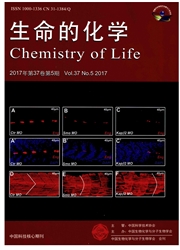

 中文摘要:
中文摘要:
目的探索建立慢性心理应激动脉粥样硬化动物模型。方法 4周龄80只apoE-/-小鼠随机均分为对照组与应激组,实验动物都以高脂、高胆固醇饲料(5%猪油,1%的胆固醇)喂养。应激组小鼠按顺序接受昼夜颠倒7或17 h(每周2次)、鼠笼倾斜成45度角7或17 h(每周2次)、噪声刺激9或15 h(每周2次,70 dB)与恐惧刺激1 h(放入大鼠刚住过鼠笼、每周2次)应激原的刺激;对照组的小鼠关在单独的实验动物房,除了不给予应激刺激外,其它的实验条件与应激组相同。分别在0、4、8与12周后4个时间点处死动物,检测血浆中总胆固醇、三酰甘油、高密度脂蛋白与低密度脂蛋白水平;采用放射免疫测定方法测定血浆中皮质酮激素水平;油红O染色法观察主动脉窦动脉粥样硬化病变。结果应激组的总胆固醇、三酰甘油与低密度脂蛋白明显高于对照组(均P〈0.05);与相应对照组相比较,应激组小鼠血浆中的皮质酮激素的水平显著升高(P〈0.05,P〈0.01,P〈0.001);主动脉窦动脉粥样硬化病变显著加重(均P〈0.01)。结论成功建立慢性心理应激动脉粥样硬化动物模型。
 英文摘要:
英文摘要:
Objective To establish an ideal animal model for atherosclerosis in aopE-/-mice induced by chronic psychological stress.Methods Eighty male apoE-/-mice were divided into groups of control and chronic psychological stress.The stress scheme was slightly modified and consisted of the following:two periods of continuous overnight illumination;two periods(7 and 17 h) of 45 degrees cage tile,two periods(9 and 15 h) of intermittent sound(a tone of 70 dB) and two periods of exposure to rat odour.The stressed mice received this stress protocol for 0,4,8 and 12 weeks(n=10 each group).The control mice were housed under identical conditions in a separate room,and had no contact with the stressed animals.All mice were fed a high-fat,high-cholesterol(atherogenic) diet containing 5%(wt/wt) fat and 1.0% cholesterol.The plasma level of TC,TG,HDL and LDL were measured by ELISA using commercially available kits,the splasma corticosterone concentration was determined by solid-phase 125I radioimmunoassay using a commercially available reagent kit,and the lesion areas in aortic sinus were stained with Oil red O and were quantified with IMAGEPRO PLUS.Results(1) Compared with the control group,the level of TC、TG and LDLC in hyperlipidemia group were higher(all P0.05);(2) After 4,8 and 12 weeks of sress,the corticosterone concentration was significantly higher in the chronic psychological stress group than that in the control group(P0.05,P0.01,P0.001,respectively);(3) The atherosclerosis lesions in aortic sinuses of the stressed group mice were significantly increased linearly in response to duration of chronic psychological stress exposure(all P0.01).Conclusion We constructed an ideal chronic psychological stress atherosclerosis apoE-/-mice model successfully.
 同期刊论文项目
同期刊论文项目
 同项目期刊论文
同项目期刊论文
 期刊信息
期刊信息
